#大慈寺
Explore tagged Tumblr posts
Text
April 12, Xi'an, China, Daci'en Temple/大慈恩寺 and the Giant Wild Goose Pagoda/大雁塔 (Part 1 - Temple and Architecture):

Daci'en Temple is famous in popular culture mainly for one reason: the monk Xuanzang/玄奘, or the real person who inspired the character of Tang Sanzang/唐三藏 (sometimes translated as "Tripitaka") in the novel Journey to the West/西游记. Xuanzang was in charge of Daci'en Temple after he returned to China in 645 AD from his journey throughout Central Asia and India. More on him later.
The temple is also known for two more things, first is its importance to Chinese Buddhism, as the temple is considered the cradle of the Consciousness-Only School (weishizong/唯识宗) and the Dharma Characteristics School (faxiangzong/法相宗)(both are part of Chinese Mahayana Buddhism), and second is the Giant Wild Goose Pagoda (built in 652 AD while Xuanzang was in charge of the temple).
The temple has been rebuilt over the years, and the current temple (excluding the pagoda) was mainly built in 1466, during Ming dynasty, thus the current temple consists of Ming-era architecture:


Drum and bell towers within the temple


Giant Wild Goose Pagoda in the distance

More pictures of the architecture. I have to say it's better preserved here than in other places so far...





Coming up to the Mahavira Hall/大雄宝殿 of the temple

As mentioned in the previous posts on Qinglong Temple, I avoided taking pictures of the Buddha statues as this is considered disrespectful. But because it's just hard to avoid including them in pictures of the architecture, the statues may be partially visible sometimes.


Approaching the Tushita Hall/兜率

More pics of the architecture, note the pattern on the windows, called chuangling/窗棂. This particular one is a "three-crossing"/三交 pattern, the highest grade of chuangling.
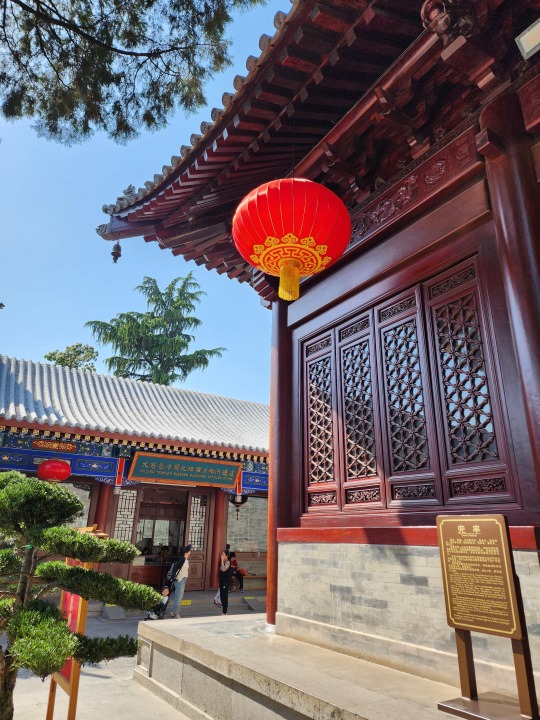

There were two visiting monks taking pictures of this relief behind Mahavira Hall, so it's probably okay to snap a picture of it. The interesting thing is the bian'e/匾额 above it, which says 人天欢喜 (right to left: "human and heaven rejoice together"). Usually it's "heaven" before "human" (天人), but here it's clearly "human" before "heaven".



The Guanyin Hall/观音殿. Guanyin is the Chinese name for Avalokitesvara. The smaller red lanterns are where visiters hang their wishes from:

And finally the Giant Wild Goose Pagoda, one of the landmarks of Xi'an. This pagoda was originally built to house all of the Buddhist texts and relics Xuanzang had brought back from India, and is the largest Tang-era brick pagoda remaining today. In Tang dynasty (618 - 907 AD), people who passed the imperial exams to become jinshi/进士 would tour around Chang'an on horseback with flowers in their hair and write poems before this pagoda, called "雁塔题名".
Before we entered the temple, I could hear a weird jingle-jangle from across the street, but it was only when we came up to the pagoda that I realized where the sound was coming from. There were bells hanging from every corner of every level of the pagoda, and they were pretty loud for their size.

Since it was pretty hot outside that day, to avoid possible heat stroke we didn't attempt to climb the pagoda (I don't think there's air conditioning inside considering that this pagoda is 1300+ years old.....). I think there were several important artifacts/relics inside? But I can find some pictures from online for part 3.



#2024 china#xi'an#china#daci'en temple#大慈恩寺#giant wild goose pagoda#大雁塔#xuanzang#玄奘#buddhist temple#chinese architecture#chinese history#mahayana buddhism#buddhism#architecture#history#culture
98 notes
·
View notes
Text
コンプできるか?深すぎる篠栗霊場(11-2)85番・境内の外
第85番札所 祖聖大寺(そしょうだいじ)「郷ノ原観音」

「愛」の文字が掲げられた愛染堂から階段を下りました。下に駐車スペースがありますがちょい上にある駐車スペースの方がキャパがあります。

慈音ノ滝
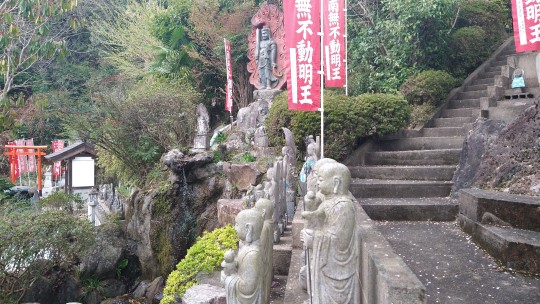
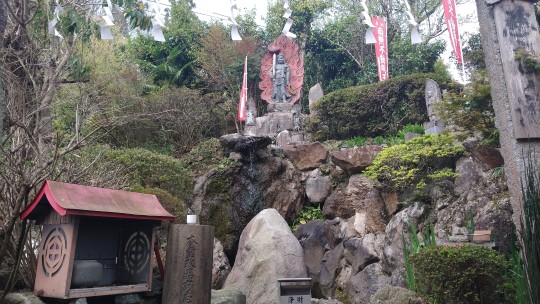
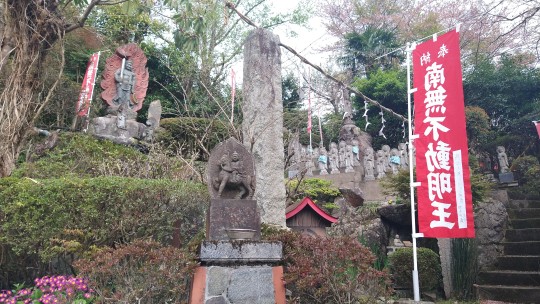
↓ 駐車スペースから

お稲荷様
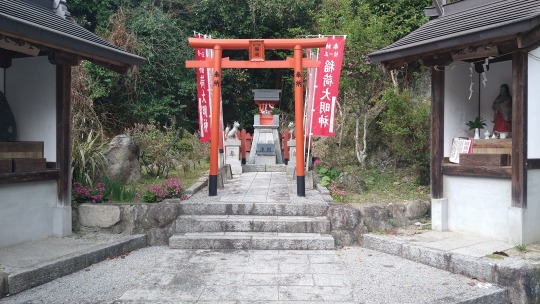
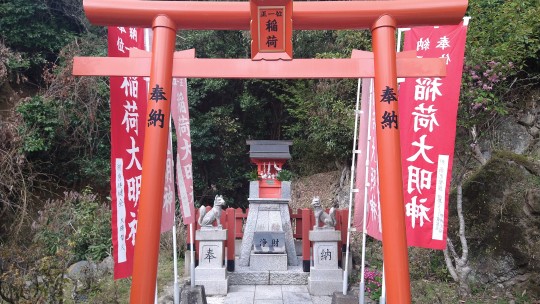
駐車スペースの左右にはお堂が並んでます。
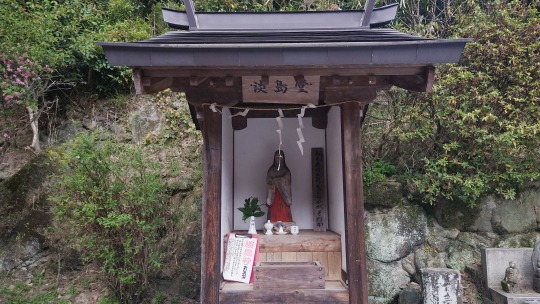
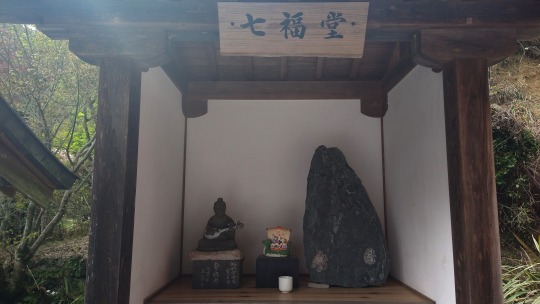

なるほど、九大の箱崎キャンパスから遷されたから大学地蔵様。
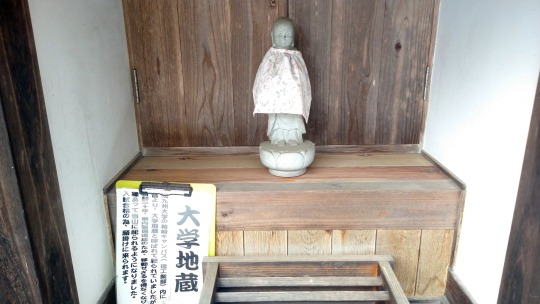
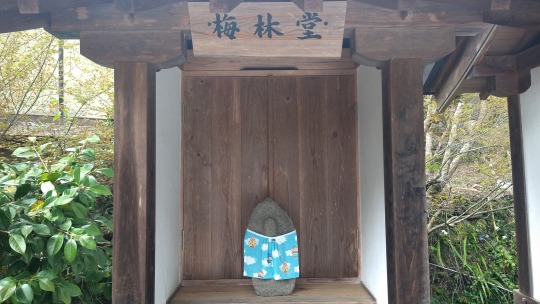
本堂裏の馬頭観音菩薩様(ばとうさん)



2023.4.4 ~ つづく
1 note
·
View note
Text
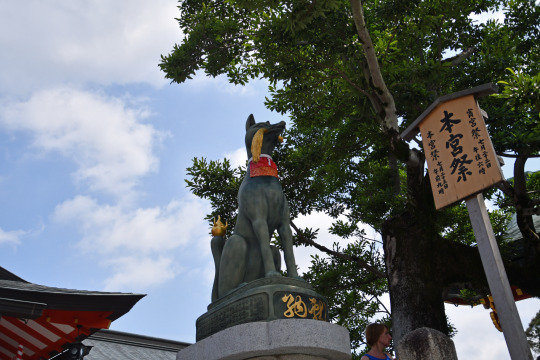
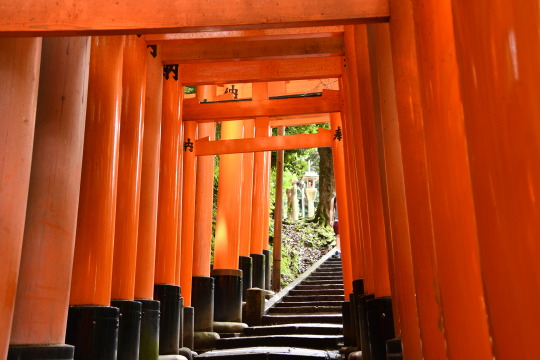





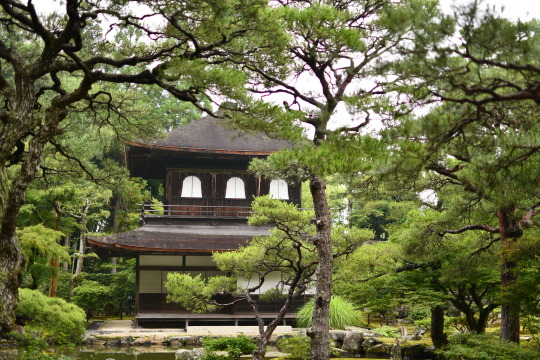


帰省途中に京都で一泊して夏の京都。 6/29: 伏見稲荷大社→石清水八幡宮 6/30: 八坂神社→知恩院→平安神宮→東山慈照寺(銀閣寺)→南禅寺→妙心寺 最強厄払い2トップ(石清水八幡宮と八坂神社)で��の輪をくぐって夏越の大祓を請けたので今年後半は安心です。
0 notes
Text



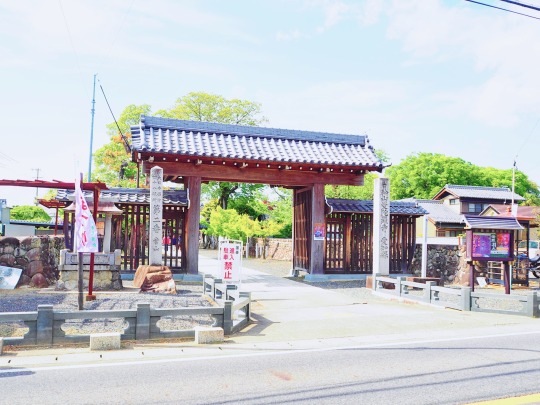

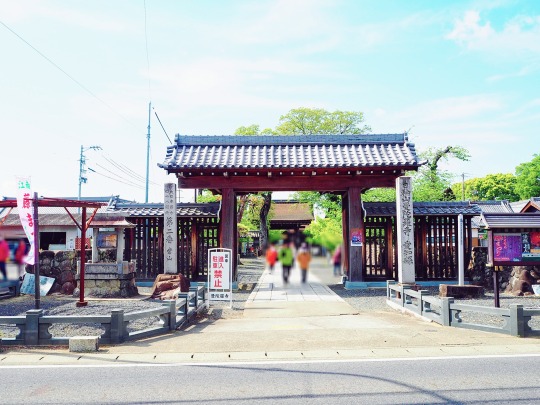

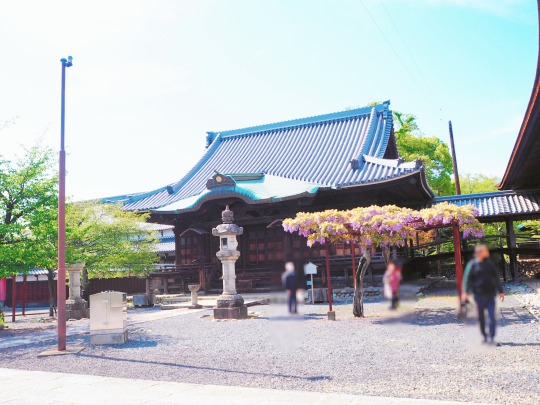

所在地:愛知県江南市前飛保町寺町202
山号:日輪山院号遍照光院
宗旨:浄土宗
宗派:浄土宗西山派
本尊:阿弥陀三尊
創建年:元徳元年 (1329年)
開山:天真乗運
正式名:日輪山遍照光院曼陀羅寺
RECボタンを勝手に押してたらしい動画📹️
#阿弥陀四十八願所#専阿乗誓#専阿上人#本尊阿弥陀仏巡礼#西方四十八願所第二番#大日本西方四十八願所#日輪山遍照光院曼陀羅寺#無量寿経#観無量寿経#阿弥陀如来#阿弥陀仏#慈悲#勢至菩薩#智慧#曼陀羅寺#浄土宗西山派#天真乗運#阿弥陀三尊
1 note
·
View note
Text

元三大師堂
2016年、深大寺 元三大師堂。
元三大師こと慈恵大師の像を安置している大師堂。
#Lightroom Classic#photographers on tumblr#lensblr#original photographer#original photographers#original photographers on tumblr#original photography#original photography blog#original photography on tumblr#photoblog#photography#Japan#Tokyo#日本#東京#深大寺#元三大師堂
265 notes
·
View notes
Quote
昔、お寺に檀家外の老夫婦が来てな、お爺さんが「この寺にはシャッターが6枚ある。車を6台持ってるなんて生臭坊主だ!」とか言い出したんですよ。私が「いや、このシャッター、古い建物を解体した廃材が入ってるんですよ。開けますから見て下さい」って言ったら その爺さん、「いや、見たら悪口言えなくなるから開けるな」ってマジで抜かしたんですよ。マジで。 さすがにお婆さんもドン引きしてましたけど、ああいう事実なんかどうでも良くてただ悪口言いたいだけの老人を支持者にしてるんだろうなと思えば、発言が腑に落ちる候補者いますよね。 なんでそんな廃材がシャッターにあるんだって?戦争体験した人達は物持ち良かったんですよ。いつか何かに使えるかもしれないって。 そうか、こういう老人にとってデマだらけの政治屋は「悪口を言っていい免罪符をくれる神様」という構造なんだろうな。いや、全然、罪を免じられないかんな。勘違いすんなよマジで。
Xユーザーの大慈さん: 「昔、お寺に檀家外の老夫婦が来てな、お爺さんが「この寺にはシャッターが6枚ある。車を6台持ってるなんて生臭坊主だ!」とか言い出したんですよ。私が「いや、このシャッター、古い建物を解体した廃材が入ってるんですよ。開けますから見て下さい」って言ったら(つづく」 / X
86 notes
·
View notes
Text
Sean bienvenidos japonítasarqueológicos a una nueva entrega, en esta ocasión vengo a aclarar dudas sobre la diosa Amaterasu dicho esto comencemos. - Amaterasu aparece en los libros kojiki y Nihonshoki que son los más antiguos de Japón, dicha diosa simboliza el sol, la luz, la compasión y la verdad. Además Representa la casa real con la flor de crisantemo, también ha recibido otros nombres como: "Hirume" y "Mukatsuhime. Sus padres eran izanagi(dios creador de Japón) e izanami(diosa del infierno), izanagi al quedar contaminado de la tierra de Yomi fue a purificarse y al quitarse la ropa fueron naciendo los demás dioses y ella nació de su ojo izquierdo. Amaterasu gobernaba el Takamanohara y su hermano Susanoo era el dios del mar. - Amaterasu, estaba asustada por su hermano menor y decidió esconderse en una cueva profunda en Takamagahara llamada "Ama no Iwato" y bloqueó la entrada. Este es el famoso “Amaniwato no Kamigakure”, que el pueblo japonés sigue recreado como una de sus muchas tradiciones populares. - Como ya hablamos en otras publicaciones el sintohismo, es una religión autóctona de Japón que durante la era Meiji sería utilizada para clasificar lo japonés y de lo que no era japonés, los japoneses nunca dejaron el sintohismo de lado. La simbología de la bandera japonesa se remonta desde tiempos muy remotos. - La diosa Amaterasu tiene unos 5000 templos dedicados a ella y se llaman Shinmei Jinja. El templo se localiza dentro del santuario Ise Jingu, también conocido como (oise-san) y el templo se llama Kotai jingu. En la ciudad de Iwato en la prefectura Miyazaki se encuentra el santuario Amanoiwato donde se dice que Amaterasu fue establecida como deidad principal. Amaterasu lo podemos traducir como: Diosa del sol o como diosa solar. - 新作へようこそ、今回は天照大神の疑問を解き明かすということで、始めましょう。 - 日本最古の古事記や日本書紀に登場する天照大神は、太陽、光、慈悲、真実を象徴しています。また、菊の花で王家を表し、「ヒルメ」や「ムカツヒメ」などの別名も持っています。彼の両親はイザナギ(日本の創造神)とイザナミ(地獄の女神)でした。ヨミから大地を離れ、身を清めに行き、服を脱ぐと他の神々が生まれ、左目から生まれました。 アマテラスは高天原を治め、弟のスサノオは海の神でした。 - 弟を恐れたアマテラスは、高天原の深い洞窟「天の岩戸」に身を隠し、入口をふさいだ。これが有名な「天岩戸の神隠れ」で、日本人は多くの人気のある伝統の1つとして再現し続けています. - 他の出版物ですでに説明したように、神道は日本固有の宗教であり、明治時代に日本人とそうでないものを分類するために使用されましたが、日本人は決して神道を放棄しませんでした.日本の国旗のシンボルは、非常に遠い時代にまでさかのぼります。 - 天照大神を祀るお寺は約5,000あり、神明神社と呼ばれています。このお寺は伊勢神宮内にあり、通称「お伊勢さん」とも呼ばれ、皇体神宮と呼ばれています。宮崎県岩戸市には天照大神を主祭神とする天岩戸神社がある。アマテラスは、太陽の女神または太陽の女神として翻訳で��ます。 - Welcome to a new installment, this time I come to clarify doubts about the goddess Amaterasu, having said that, let's begin. - Amaterasu appears in the Kojiki and Nihonshoki books, which are the oldest in Japan, this goddess symbolizes the sun, light, compassion and truth. It also represents the royal house with the chrysanthemum flower, it has also received other names such as: "Hirume" and "Mukatsuhime. His parents were izanagi (creator god of Japan) and izanami (goddess of hell), izanagi when contaminated by the earth from Yomi she went to purify herself and when she took off her clothes the other gods were born and she was born from her left eye. Amaterasu ruled the Takamanohara and her brother Susanoo was the god of the sea. - Amaterasu, scared of her younger brother, hid in a deep cave in Takamagahara called "Ama no Iwato" and blocked the entrance. This is the famous "Amaniwato no Kamigakure", which the Japanese people continue to recreate as one of their many popular traditions. - As we have already discussed in other publications, Shintoism is an indigenous religion of Japan that during the Meiji era would be used to classify what is Japanese and what was not Japanese, the Japanese never abandoned Shintoism aside. The symbology of the Japanese flag dates back to very remote times. - The goddess Amaterasu has about 5,000 temples dedicated to her and they are called Shinmei Jinja. The temple is located inside the Ise Jingu shrine, also known as (oise-san) and the temple is called Kotai jingu. In the city of Iwato in Miyazaki Prefecture is the Amanoiwato Shrine where Amaterasu is said to have been established as the chief deity. Amaterasu we can translate it as: Goddess of the sun or as solar goddess.
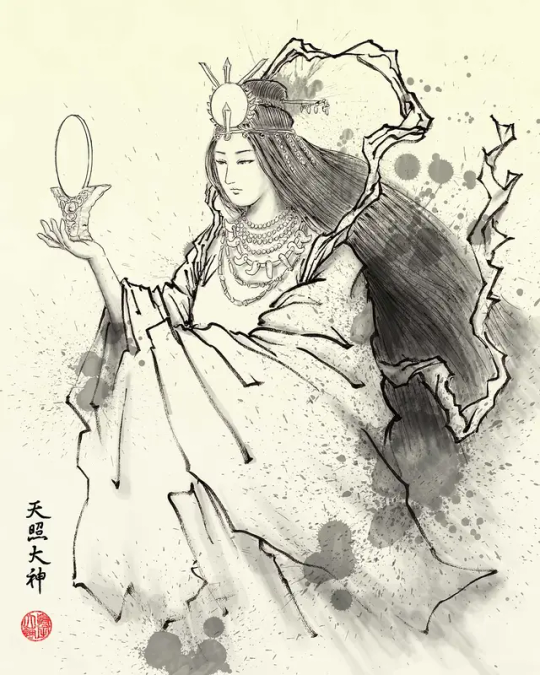
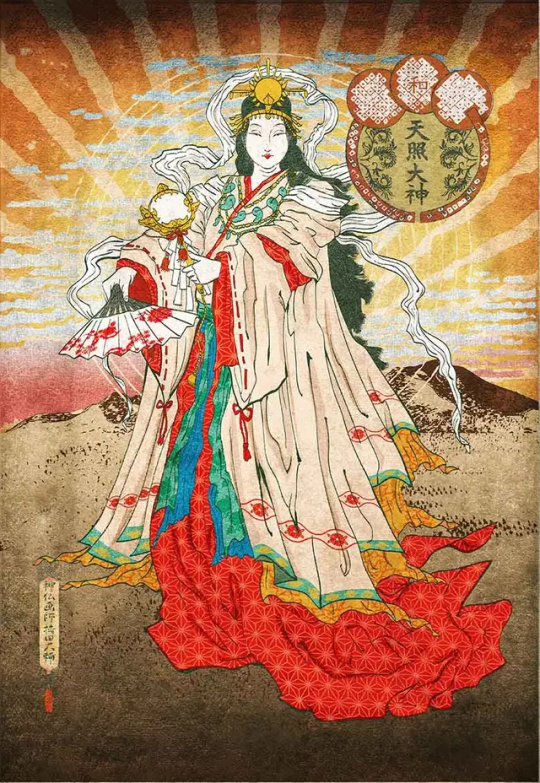
#日本#アマテラス#アート#写真#ユネスコ#文化#神話#神道#シントイズム#japan#amaterasu#art#photo#unesco#culture#mythology#synthology#sintoism
62 notes
·
View notes
Text
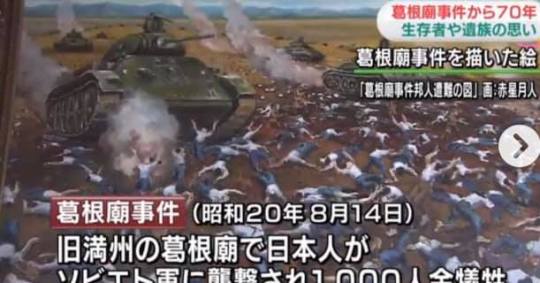
❖ 昭和20年8月14日 ❖ 白旗を上げた非武装の日本人数千名に、ソ連兵たちが銃弾をあびせ、戦車で引き殺した事件、『葛根廟大虐殺事件』があった日です。 一方的に条約を破り満州に侵攻してきたソ連兵は、日本人を戦車で引き殺したあと、銃剣でとどめをさし、2時間余りで千人以上を殺害。 9割が女子子供でした。 婦女子は暴行をされた後、乳房を切り落とされむごい方法で殺されました。 小屋に隠れていた婦女子には、朝まで強姦し続けた後、小屋に枯れ草を投げ入れ火を付け焼き殺しました。 自害するものもいる中、やっとの思いでかろうじて逃れた者は日本本土をめざし南下の途中、次に待っていたのは満洲人や支那人や朝鮮人の無慈悲な想像に耐え難い強姦暴行殺戮でした。 日本の地を踏むこと叶わず無惨に命を落としたのです。 その内の僅か数十人が残留孤児となりました。 本当に語り継がなければならないのは、 ウソで作られたK国がいう慰安婦問題でも、 C国がいう南京虐殺でもなく、 真実の『葛根廟大虐殺事件』の方なのです。 日本人が被害にあ���た事件は、全く教科書では教えないことが、最大の問題だと思います。 毎年8/14、東京目黒の五百羅漢寺で今日も供養が行われているそうです。

379 notes
·
View notes
Text
Peng Doesn't Like Farts

Fans of Lego Monkie Kid, as many of you may already know, Peng is based on an ancient monster king appearing in chapters 74 to 77 of Journey to the West (Xiyouji, 西遊記, 1592). In the end of his arc, he is trapped above the Buddha's throne and submits to Buddhism. But you may not know that this very same character appears in a later novel, The Complete Vernacular Biography of Yue Fei (Shuo Yue quanzhuan, 說岳全傳, 1684 CE; a.k.a. The Story of Yue Fei). Peng is exiled from paradise for ... and I'm not joking ... killing a stellar spirit for farting during the Buddha's sermon.
Chapter one of Yue Fei's biography reads:
Let’s talk about the Buddha Tathagata at the Great Thunderclap Monastery in the Western Paradise. One day, he sat on a nine-level lotus throne, and the Four Great Bodhisattvas, the Eight Great Vajra Warriors, the five hundred Arhats, the three thousand Heavenly Kings, nuns and monks, male and female attendants, all of the heavenly sages who protect the Dharma, gathered to listen to his lecture on the Lotus Sutra. His words were like flowers and precious jewels raining from the heavens. But, at that time, a star-spirit, the Maiden Earth Bat, who had been listening to the lecture from beneath the lotus throne, couldn’t bear it any longer and unexpectedly let out a stinky fart. The Buddha was a great, merciful lord, so he didn’t mind even the slightest bit. But don’t sympathize with the Dharma protector above his head, the ��Great Peng, the Golden-Winged King of Illumination,” whose eyes shone with golden light and whose back was a scene of auspiciousness. He became angry when he saw the nasty, filthy Maiden Earth Bat, and so he unfurled both his wings and dropped down to kill the spirit by pecking her on the head. The light-point of her soul shot out of the Great Thunderclap Monastery and went to the Lands of the East (China) in the world below to find a mother and reincarnate. She was reborn as a daughter of the Wang clan. She would later marry the Song Prime minister Qin Hui (1091-1155) and come to cruelly kill the righteous (i.e. Yue Fei) as a means to get revenge against today’s enemy. We will talk about this later. Let’s return to the Buddha, who saw what happened with his all-seeing eyes and exclaimed, “Good! Good! It turns out that this is an episode of karma (cause and effect).” Then he called the Great Peng bird to come closer and shouted, “You evil creature! You already took refuge in my teachings. How can you not follow the five precepts by daring to commit such a horrible crime? I don’t need you here; you will descend to the mortal world to pay off your (karmic) debt and wait until you have fulfilled your work. Once that is completed, only then will I allow you to return to the mountain to achieve the right fruit (Buddhist merit).” The Great Peng complied with the decree, flying out of the Great Thunderclap Monastery directly to the Lands of the East to be reincarnated. We will stop here (translation by me). 且說西方極樂世界大雷音寺我佛如來,一日端坐九品蓮臺,旁列著四大菩薩、八大金剛、五百羅漢、三千偈諦、比丘尼、比丘僧、優婆夷、優婆塞,共諸天護法聖眾,齊聽講說妙法真經。正說得天花亂墜、寶雨繽紛之際,不期有一位星官,乃是女土蝠,偶在蓮臺之下聽講,一時忍不住,撒出一個臭屁來。我佛原是個大慈大悲之主,毫不在意。不道惱了佛頂上頭一位護法神祗,名為大鵬金翅明王,眼射金光,背呈祥瑞,見那女土蝠污穢不潔,不覺大怒,展開雙翅落下來,望著女土蝠頭上,這一嘴就啄死了。那女土蝠一點靈光射出雷音寺,徑往東土認母投胎,在下界王門為女,後來嫁與秦檜為妻,殘害忠良,以報今日之讎。此是後話,按下不提。 且說佛爺將慧眼一觀,口稱:「善哉,善哉!原來有此一段因果。」即喚大鵬鳥近前,喝道:「你這孽畜!既歸我教,怎不皈依五戒,輒敢如此行兇?我這裡用你不著,今將你降落紅塵,償還冤債,直待功成行滿,方許你歸山,再成正果。」大鵬鳥遵了法旨,飛出雷音寺,徑來東土投胎不表。
#Great Peng#Golden-Winged Peng#Peng#Great Roc#Journey to the West#JTTW#Sun Wukong#Monkey King#Lego Monkie Kid#LMK#Azure Lion#Demon Bull King#Yellow Tusk Elephant#Celestial realm#sworn brothrs#smelly farts#farts
179 notes
·
View notes
Text
April 12, Xi'an, China, Daci'en Temple/大慈恩寺 and the Giant Wild Goose Pagoda/大雁塔 (Part 3 - History):
The entrance to the Xuanzang Memorial Hall:

Xuanzang/玄奘 (602 - 664 AD; birthname Chen Yi/陈祎) was a famous Chinese monk, scholar, and translator who journeyed throughout Central Asia and India to bring Buddhist sutras from India and translate them into Chinese. He was also the founder of the Consciousness-Only School/唯识宗 of Chinese Mahayana Buddhism.
A statue of Xuanzang in the memorial hall:

Xuanzang's 17-year journey from Chang'an (Xi'an) to India and back drawn out on a map. The route he took to India is in red, and the return route he took back to Chang'an is in green. On his way he traveled through many kingdoms in Central Asia and India, and he would later compile his experiences into the work known as Records of the Western Regions/《大唐西域记》. This work is still very important for historians and archaeologists studying Central Asian and Indian history, because it gives locations of important sites, such as the ruins of Nalanda monastery (phonetically translated as 那烂陀寺 in Chinese) in modern day Bihar. The Ming-era novel Journey to the West/《西游记》 was also very loosely based on this work; more specifically, the novel was based on folk tales about Xuanzang's travels, which was in turn loosely and partially based on Xuanzang's experiences recorded in this book.

(Metal?) wall murals and a giant wood relief depicting Xuanzang's early life and his journey to India and back (generally viewed in order from left to right since it's a continuous narrative):



Biography of the Tang Dynasty Buddhist Tripitaka Master Xuanzang of the Great Ci'en Temple/《大慈恩寺三藏法师传》 (alternatively translated simply as "The Life of Xuanzang"), written by Xuanzang's disciple Huili/慧立 in 688 AD.

An artifact not strictly related to Xuanzang: Ritual Confession of Mercy Temple/《慈悲道场忏法》, a Buddhist repentance work/忏�� written for Emperor Wu of Liang (464 - 549 AD) for the purpose of conducting a "ritual of transcendence" (called 超度; I could not find an English translation for this so this is my own translation) for the emperor's deceased wife. This particular version was printed in Ming dynasty in 1608.


Ceiling of the memorial hall, decorated with Sanskrit characters:

The second exhibition hall also has wall murals and a giant wood relief, this time depicting Xuanzang's life after returning to China:



Xuanzang has stated that the purpose of his journey was to bring back Buddhist sutras in their original Sanskrit, so that the integrity of the original texts may be better preserved in future translations and a more faithful interpretation of the sutras may be achieved. When he returned from India in 645 AD, he brought back with him 657 Buddhist texts in Sanskrit, and with support from Emperor Taizong of Tang, he proceeded to translate these texts into Chinese with his team of translators.
Daci'en Temple still preserves less than 20 leaves of the original palm leaf manuscript/贝叶经 brought to China by Xuanzang. I didn't get to see these artifacts myself, but just for reference, here are some potato quality pictures I've found online:


Below is a part of a (Ming-era? Not sure) printed copy of the Mahā-prajñāpāramitā Sūtra (《大般若经》 or 《大般若波罗蜜多经》 in Chinese), which was translated into the Chinese text seen here by Xuanzang and his team:

Part of Complete Translations by Master Xuanzang/《玄奘法师译撰全集》:

A view of the exhibited part of the collection of works that were either by Xuanzang or written about Xuanzang. Being an aspiring translator myself and knowing that these were works connected to a great translator who lived 1300+ years ago, there is just a feeling of awe here that can't be described properly in words...

There's also the twin steles associated with Xuanzang at the foot of the Giant Wild Goose Pagoda. The stele on the west (below left) was written from right to left, composed by Emperor Taizong of Tang Li Shimin/唐太宗 李世民, while the stele on the east (below right) was written from left to right, and was composed by Emperor Gaozong of Tang Li Zhi/唐高宗 李治 (the two emperors are father and son). The calligraphy for both steles was provided by Chancellor Chu Suiliang/中书令 褚遂良. Both steles gave an account of Xuanzang's life and praised him for his achievements, and both were erected in 653 AD. Since I didn't go into the pagoda, I didn't see these two steles (I believe one of them isn't at the pagoda anymore? It might be at Beilin Museum now), so here are pictures of the ink rubbings from Open Museum (open in new tab to view the full image):


And finally, some fun souvenirs from the gift shop! These are tiny incense pellet holders topped with the twelve zodiac animals

A funny greeting card that translates to "And We miss you too" (朕 is a first person pronoun used exclusively by emperors to refer to themselves; today many people use 朕 to jokingly refer to themselves)

#2024 china#xi'an#china#daci'en temple#大慈恩寺#giant wild goose pagoda#大雁塔#xuanzang#玄奘#buddhist temple#chinese history#chinese culture#journey to the west#mahayana buddhism#buddhism#history#culture
73 notes
·
View notes
Text



ちょっと前の連休の最終日、金沢の浄土真宗の照円寺で「地獄極楽絵図御開帳」という秋の特別公開をやっているとの連絡が関係者からございまして、急いで行ってまいりました。
(関係者。笑)
お寺の場所は、金沢駅近くにある金沢最大の寺院・金沢東別院の前の別院通りのどんつきにあります。
江戸後期より伝わる八種の地獄と六道、そして仏様の慈悲によって救われた人間が到達することのできる彼岸・十種の極楽絵図を一堂に公開。
「地獄極楽絵図があなたの生き方に問いを投げかけます」ということで、誰もいないだろうとお寺に入ったら、本堂の中はアイドルのコンサート並みに人がいて、地獄絵図よりもまずそっちにビックリでございました。
(地獄見たさに集まる人々)
これは、4月に東京の府中市美術館でも公開されていた美術展で、毎年秋に金沢の多くのお寺が参加して行われている「オテラートかなざわ」の行事の一環として今回凱旋展示されておりました。
靴を脱いで本堂に入ると、そこには小さな子供やカップル、おじいさん、おばあさん、明らかにセンスのいいデザイナー風の方たち、みうらじゅんみたいな美大生とかで場内満杯(笑)。
(世の中、こんなに寺マニアがいるとは。笑)
境内には地獄絵図(複製)と記念撮影できるスポットもありました。
江戸後期に照円寺十五代住職敬連〈きょうれん〉により制作された地獄絵図の数々に圧倒。
写真撮影はできないので、言葉では表現しずらいですが兎に角、ここまで凄い地獄絵図は京都でも見たことがありません。
十八枚の大きな絵はどれもリアルで、地獄ごとに詳細な解説がついていてとっても見やすかったです。
最後の方に極楽の絵図もあって阿弥陀如来の額からウルトラセブンのエメリウム光線みたいな光を出しているシーンもあって、「知恩院とか平等院で観た来迎図とおんなじだ」とひとり脳内で確認会話。
(確認会話ってなんやねん。笑)
真剣に絵を見ているとニコニコ顔の若い住職さんに声をかけられまして、しばし地獄の説明をしていただきました。
(こんなに人がいるのに何故僕だけに。笑)
帰りに玄関で住職のお母様だと思われるおばあさんに挨拶をすると、物凄く丁寧に挨拶を返されて恐縮しながらお寺を出ました。
(いや、マジで凄い絵だったな)
7 notes
·
View notes
Quote
「慈善を受ける者は、必ずと言っていいほど、与えてくれる人間を憎むものだ───それが人間性の抜きがたい性質なのである。そこで、味方が五十人なる百人なりいるとなれば、その憎しみをあらわにするのだ」 「これは善意にもとづくもので、われわれを見さげる意図などまったくなかったと思う。だから、感謝するのが当然だったーーーそれでも、誰一人感謝しなかった」 (『パリ・ロンドン放浪記』岩波文庫 ジョージ・オーウェル作 小野寺健訳) 注目すべきはオーウェルが「我々は今、集団でいるから気が大きくなって善意の方々にパン屑を投げつけたり罵倒したりしているのだ。一人だったら卑屈な態度で感謝しているだろう」と冷静に自分を分析していること。 「それは、食わせることによって我々を侮辱した人間にたいする復讐だったのである」 「タダ飯を食わせるという侮辱に対する復讐」、SNSで時々みる「なぜ無職の父、夫はあんなにも偉そうなのか」「なぜ初対面のおじさんに食事をご馳走してもらっている彼女たちは『おじ』を小馬鹿にするのか」「なぜ専業主婦の母はいつも父の悪口を言っていたのか」の答えの一つにもなってそうな。
Xユーザーのこりまさん
3 notes
·
View notes
Text
Chapter 19: Pearls before Swine
-Pigsy started off the chapter with a long poem about his backstory, full of internal alchemy jargons that were mostly explained in the footnotes. So, instead of going into details, I'm just gonna talk about the general idea of "Reversal" in internal alchemy, namely, the reversal from Houtian("Post-Heaven") to Xiantian("Pre-Heaven").
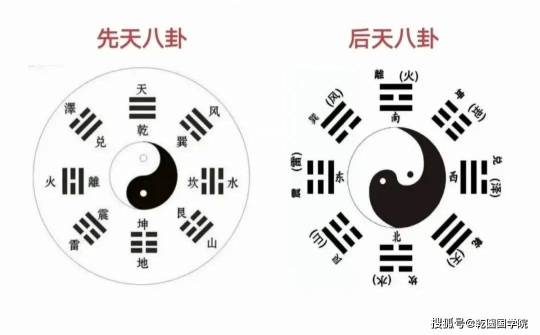
-The trigram on the left of this picture is the Xiantian Trigram, aka Fuxi's Trigram, while the one on the right, the Houtian Trigram, aka King Wen's Trigram. Notice how in the former, the north and south position is occupied by Qian and Kun (Heaven and Earth), while in the latter, it's Li and Kan (Fire and Water)?
-Well, according to internal alchemy theory, the "Qian" of the Xiantian Trigram represents the primodial state of human existence, where the Spiritual Mind(元神) and Vital Energy(元气, or Qi) are one. Separated after birth, they morph into the "Li" and "Kan" of the Houtian Trigram, after the middle "⚊" in "☰", representing Vital Energy, switches place with the middle "⚋" in "☷" and causes the Spiritual Mind to become Yin-aligned.
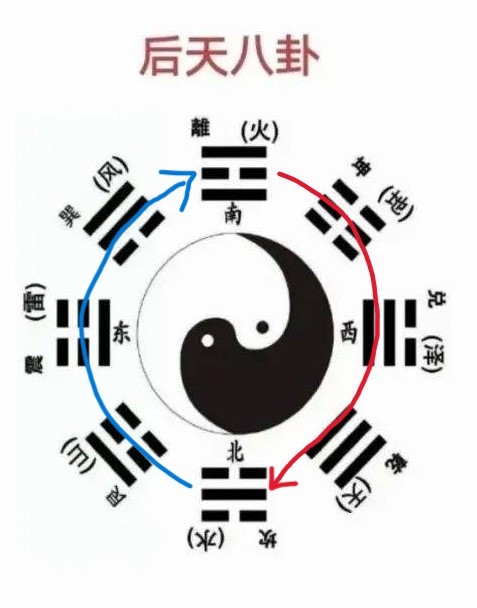
-Cultivation is supposed to reverse the Li-Kan of Houtian back to the Qian-Kun of Xiantian through the fusing of the Spiritual Mind and Vital Energy, granting practitioners immortality in the process. Thus, the allusion to the "Li-dragon" and "Kan-tiger" in the poem.
-On a tangentially related note, according to the Book of Changes(周易), the Kan trigram is represented by the pig, which is but another example of the long-lasting tradition of associating pigs with the Water element in ancient Chinese culture.
-Fast forward to Pigsy officially joining the group: his religious name, Zhu Eight Rules, could be a reference to the 8 Buddhist prohibitions against killing, lying, stealing, sexual debauchery, indulgence in luxury, drinking, dancing and music, and eating out of regular hours.
-However, if we look at the sentence before that, Tripitaka states that Pigsy had "not eaten the five forbidden viands and the three undesirable foods"(五荤三厌). The first 5 refers to the Buddhist dietry restriction against five sorts of pungent vegetables, while the 3 undesirable foods are Daoist prohibitions against the consumption of wild geese, dogs, and fish/turtle.
-Personal story—I first read the full JTTW novel while hospitalized, and still vividly remembered how the book I borrowed from the nurse happened to be missing several pages in the Crow's Nest Master section. Anyways, who is this guy that popped out of nowhere just to give Tripitaka the Heart Sutra and make digs at his disciples?
-He appeared to be an amalgation of two figures:
1) The "Bird's Nest Master" recorded in the Buddhist history compendium 五灯会元, who lived atop a pine tree in Hang Zhou and was visited by the famous poet Bai Juyi. After Bai voiced some rather reasonable safety concerns about the whole "living on a tree" thing, he retorted that the poet was in an even more dangerous situation, sth sth being an official of the court is like amidst flames sth.
2) The filthy, sickly man who appeared in Xuanzang's biography, 大慈恩寺三藏法师传, and taught him the Heart Sutra in return for the monk's kindness, which would later ward him from demons and ghosts during the crossing of the desert.
-It's kinda fun to imagine him as an actual cultivated crow, working to attain Buddhahood, tho.
@journeythroughjourneytothewest
27 notes
·
View notes
Photo

✿ 玉こんにゃく | Tama Konnyaku ・「玉こん」の愛称で親しまれる山形の郷土料理。水を使用せずしょうゆのみで煮て作られるのが一般的で、からしを付けていただきます。山形市にある山寺 (宝珠山立石寺) を開山した円仁和尚 (慈覚大師) が、中国から持ち帰ったこんにゃくを寺の精進料理に使いはじめ、それが広く普及したのがはじまりだといわれています。
#玉こんにゃく#日本:こんにゃく#日本:蒟蒻#日本:玉こんにゃく#日本:山形#山形:こんにゃく#こんにゃく#蒟蒻#玉こん#玉蒟蒻#山形#日本#2020〜#醤油#からし#日本:醤油#日本:からし#山形:玉こんにゃく#東北
2 notes
·
View notes















